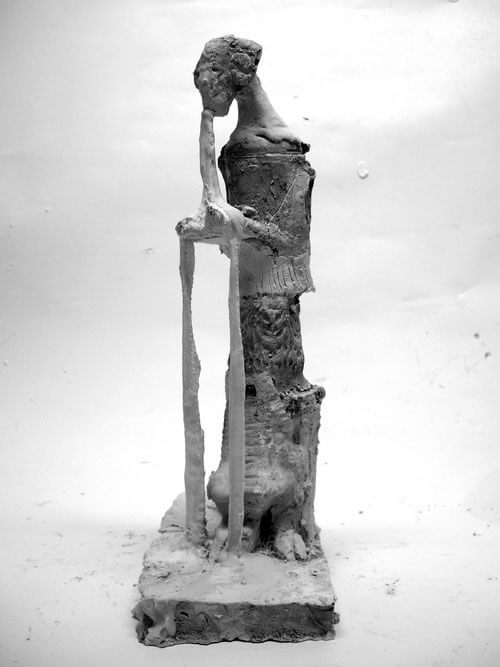POST.PAYSAGES.
Matti Basis / Serge Brignoni / Jon Campbell / Carmelo Cutuli / Oded Feingersh / Debora Fella / Yona Lotan / Federica Pamio / Carlo Alberto Rastelli / Liu Yujia
Curated by Mattia Desogus
16 May - 10 August 2025
The question of landscape started being tackled with increasing interest in artistic circles towards the end of the seventeenth century. In the area of figurative representation, the aesthetic of illustrating the visual field evolved in artists, as something approaching a necessity – or perhaps a devotional practice – made its presence felt in representations of a forest, of clouds or of a sheet of water. That sentiment, which drove art until the triumph of the Romantic era, must necessarily be sought in the artist’s desire to immerse himself in that immensity, in that infinite perfection that dominates events. The human being’s aptitude for employing an artistic capacity to indulge in total meditation when faced with nature was a typical trait of the nineteenth century, when the virtuoso performances of Flemish art were finally surpassed, as the focus zoomed in on man, and thus on the artist, now minimised and impotent in the presence of extreme natural phenomena. The very brushstrokes themselves became active participants in the whirlwind of the sublime, charging the artistic gesture with impetus and transferring those sentiments onto the canvas, where they would involve and overwhelm, in a complete mutation that painting would thenceforth never more abandon.
So, sentiment.
If we were to allow ourselves to be lulled today into allusions about the transformation of the dialogue between artist and landscape, we would be talking about post-landscape. Ever since the years immediately following the world wars, the artist – whose inherited scene of landscape painting is mutated and in progressive turmoil – has learned to reinterpret previous experiences, managing to identify personally with the space, conjuring up the same sentiments as his predecessors. To quote the words of Michael Jakob, “landscape is an experience of self”. Nor can there be any other starting point for research. The perception of space, achieved maybe by merely opening a window to look out onto a garden or by contemplating the complexity of a flower, still evokes the idea of the sublime by triggering those mysterious mechanisms of the human memory. For some, it is also a wake-up call for our spiritual side as it surveys creation.
We have Italo Calvino to thank for reminding us that nature can also be hostile and may often set in motion a sensation of disorientation, if not of actual danger: a hostility whose roots can be traced, first and foremost, to the consequences of human activity on the environment.
More than ever before, we find ourselves today coming to terms with the changes wrought by anthropisation, which wriggle their way between inevitable and prissy attempts at safeguarding the landscape, only to arrive at an unjustified process of victim-blaming of their own actions.
Even urban spaces have not been spared these generations/degenerations of the mind. Today’s cities no longer devour man, who has learned to mistrust them, to live in and experience them while accepting that they are uninhabitable.
Nature and the city, which had always been distinct, now meet up again on the same tracks, comparing notes about the benefits they have brought to the individual. Not two separate organisms, then, but reciprocally complementary ones, both benevolent and malevolent, insidious and at the same time hospitable. And Calvino also had something pertinent to say about the dichotomy between full and void: “Every city receives its shape from the desert it opposes” (from Italo Calvino, Invisible Cities, 1972.)
It is our conscience – and the conscience of artists – that adapts to new ideological interpretations of beauty, to an aesthetic that may be different, but is not necessarily less emotionally involving.
Mattia Desogus, 2025.
Translated by Pete Kercher
Carmelo Cutuli (1974), Big Goat, 2013. Plaster, 35 x 21.5 x 10.5 cm, signed Cutuli by impression on the back of the sculpture at the bottom centre. Private collection, Switzerland.
Where
MACT/CACT
Museo e Centro d’Arte Contemporanea Ticino
Via Tamaro 3
6500 Bellinzona
Opening hours
Friday, Saturday, Sunday
2 p.m. – 6 p.m.
Entry
CHF 6.00



